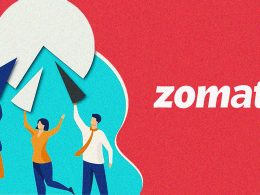The Reserve Bank of India, RBI announced its fourth bi-monthly monetary policy for FY25 on October 9. After a three-day meeting of the six-member RBI Monetary Policy Committee (MPC), RBI Governor Shaktikanta Das revealed that the rate-setting panel decided to keep the benchmark repo rate unchanged at 6.5% for the tenth consecutive meeting. However, a shift in policy stance was seen as the MPC moved to a ‘Neutral’ outlook from ‘withdrawal of accommodation.’
While FY25 GDP growth estimates were retained at 7.2%, the MPC even marginally raised its expectations for the first quarter of the next financial year to 7.3% from 7.2%. CPI inflation for FY25 is expected to hover around 4.5%. In a nutshell, the RBI’s message is one of stability – key rates remain untouched, and both growth and inflation are projected to remain strong and under control.
In His note, the RBI Governor Shaktikanta Das likened inflation to a “horse brought to the stable within the tolerance band,” cautiously warning that the Central Bank must be mindful of how and when to “open the gate.” The war against inflation, he said, is one in which historical lessons come into play, with elephants and horses being traditional symbols in wars.
However, beneath this surface of steady optimism, cracks in the economic glory are beginning to show, here’s why.
)
1) Manufacturing Slows, Inventory Piles Up
India’s manufacturing sector, once touted as a key driver for employment and growth, has hit a stumbling block. Growth in the sector dropped to an eight-month low in September, weighed down by a slower pace of expansion in international orders and domestic sales. For a country relying on manufacturing as a powerful lever for improving prospects, this is a significant concern.
Adding to this is a glut of unsold vehicles sitting in inventories across the country, a situation industry representatives are calling “alarming.” The Federation of Automobile Dealers Associations (FADA) fears that even the ongoing festive season might not be enough to counterbalance the sluggish demand and ballooning inventory levels. Commercial vehicle sales, too, have seen their fourth consecutive decline, marking the worst figures in over 40 months.
2) Weak GST Collections and Consumer Cutbacks
Looking at broader economic markers, GST collections last month grew by a mere 6.5%, the weakest pace of expansion since June 2021. Meanwhile, air cargo traffic contracted for the second consecutive month, signaling a slowdown in trade and business activity.
The fast-moving consumer goods (FMCG) sector, typically a bellwether of household demand, also reported a worrying trend.
According to NielsenIQ, there was a sharp drop in volume growth in both food and non-food categories for the June quarter. Strikingly, the decline was most notable in essentials like salt, flour, and oil—staples of the average Indian kitchen. If households are cutting back on these basics, its time to question, how far are the households going to cut/tame their budget?
3) Finance Ministry’s Caution Are Signs of Urban Weakness
Here’s what makes the RBI’s commentary even more out of place. The Finance Ministry, typically quick to refute concerns about growth, sounded a note of caution in its August monthly economic review. It pointed to “signs of weakness” in urban demand that warrant careful monitoring. Yet, despite these concerns, the Central Bank chose to hold rates and even increase its growth estimates.
4) GDP Rankings Don’t Tell the Full Story
There is yet another dimension to the growth story that raises concerns.
For months now we have been celebrating India’s ranking – fifth globally in overall GDP, trailing only the US, China, Germany, and Japan, however, the reality becomes grimmer when this is translated to per capita terms – with a GDP per capita of just $2,730, India ranks closer to 130th in the world.
The disheartening truth is exemplified by research from the World Inequality Lab, which found that wealth concentration in the richest 1% of India’s population is at its highest level in six decades.
The number of billionaires in the country has surged from just one in 1991 to a record 200 by 2024, making India third globally in terms of the number of billionaires but here is the hard hitting fact, India is a country with a population of 1.43 billion, therefore how many families does this number represent?
By the close of 2023, India’s wealthiest citizens controlled over 40% of the nation’s wealth—the highest concentration since 1961. The widening gap in wealth inequality is undeniable; a tiny fraction of the population continues to amass a disproportionate share of the country’s wealth. For India’s wealthy minority, growth has meant expanding fortunes, while for the majority, it has translated to more struggle.

5) Inflation and the Rising Cost of Living
The RBI’s policy was not just optimistic about growth but also about inflation.
Now they are some economists that agree that food inflation looks more balanced than it has in many months, but Crisil’s ‘Roti Rice Rate’ report offers a different perspective.
The cost of a simple home-cooked vegetarian thali rose by 11% year-on-year in September 2024 where key ingredients like onions, potatoes, and tomatoes saw price hikes of 53%, 50%, and 18%, respectively.
There has been much blame on the supply-side issues such as lower arrivals and erratic weather giving rise to prices, but the fundamental takeaway is clear—food prices remain persistently high, and households are feeling the squeeze.
India’s own Economic Survey confirmed this pressure, showing that food inflation has doubled over the last two years.
Thus the real challenge isn’t just managing temporary spikes in prices, but addressing the deeper, structural issues that are keeping food costs elevated for extended periods. For many Indian households, this creates a severe strain on day-to-day budgets, with no immediate relief in sight.
This policy announcement may also mark the final chapter for the current RBI chief. In December 2021, Shaktikanta Das received a three-year extension, which ends in December 2024. It remains to be seen whether he will be granted another term.
Until then we are left with many important questions that aren’t likely to be addressed anytime soon!
Fasten Your Seatbelts
Despite the optimistic stance from the RBI, the hard data suggests otherwise.
Manufacturing is struggling, consumers are cutting back on essentials, and the global situation adds another layer of unpredictability and the Finance Ministry’s own warnings about urban demand and the growing wealth inequality only add to the concern.
As food prices continue to rise and the festive season approaches, it’s clear that India’s economic ride is far from smooth. It might be time for everyone to fasten their seat belts.









